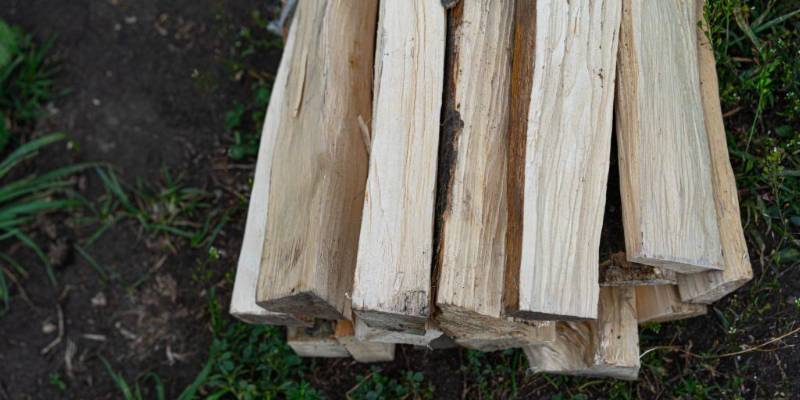How to Hang Hammock: Your Ultimate Guide

The versatility of a hammock allows you to create a serene oasis wherever you go with minimal effort. Learning how to hang a hammock is simple, as you can attach it almost anywhere—just two trees in the garden, at a campsite, or in the park are sufficient. You can even bring the tranquility indoors by setting up a hammock in your apartment or out in an open field with a few clever tricks.
However, depending on the selected installation location, there are different challenges you can face for the correct and safe assembly of the hammock. Prepare to approach the assembly of your hammock with a smile of anticipation as we provide a concise guide. We’ll cover how to hang your hammock effectively, key considerations to pay attention to, optimal tree protection methods, necessary accessories, and the secure knots to fasten your hammock.
Ensure Ample Space for Suspension
The space required depends on the type and size of your hammock. Since every hammock sags a little, the suspension height increases with the distance between the anchor points. The optimal suspension height corresponds to about half the distance between the anchor points. You should plan at least three to five square meters of floor space, depending on the model.
Calculation of Space Requirements in Detail
The most important criterion for the space requirement of your hammock is its length. While comparatively compact “Columbian hammocks” are around 300 centimeters long, “North American-style” hammocks are significantly larger at up to 400 centimeters in length.
The width of the lying surface is also important. By calculating length (cm) x nominal lying area (cm), you get a generous value for the minimum space requirement that you can use as a guide.
Depending on whether it is a stick hammock or a cloth hammock, you can use a simple rule of thumb to calculate the space requirements more precisely:
Basically, the distance between the anchor points should be 20-30 centimeters shorter than the total length of the hammock. A hammock hangs optimally when it sags slightly and has the shape of a banana. If the distance between two trees for example is too great, you can shorten it with the help of suitable ropes and slings.
Stick Hammock

Rod hammocks have a tension rod (spreader rod) that spreads the lying surface apart. This keeps the hammock in shape. Depending on its size, it also offers a comfortable space for two people. For a hammock with a spreader bar, the optimal hanging height is a quarter of the distance between the two anchor points. So if you have a hammock whose anchor points are 360 centimeters apart, you should attach them at a height of 90 centimeters.
Cloth Hammock

Cloth hammock is characterized by its classic design without a spreader bar. If the hammock is under load, it contracts. A cloth hammock therefore takes up less space. In return, cloth hammock sags a little more. For the optimal suspension height, choose the height of the anchor points half the distance between them. If the points on your fabric hammock are 360 centimeters apart, the attachment points should be 180 centimeters high.
Find the Right Place for the Hammock
When looking for a nice place for your hammock, you are free to choose. The suspension on ropes and slings gives you the greatest possible flexibility. Whether you take two trees, screw hooks into the wall in the living room, choose a ceiling mount, or buy a mobile hammock stand. The decision is yours. You can also simply roll up your hammock and take it with you on a hike to spontaneously relax a little.
Fasten a Hammock in the Apartment
If you want to enjoy the comfort of your hammock indoors, that is easily possible. After all, you have several options. All you need are two viable anchor points that are a reasonable distance apart and a large enough space. You can attach the hammock to the ceiling or between two walls. In any case, the room should be large enough to fit at its full length and there is at least one meter of space left and right.
Hammock Ceiling Suspension
The easiest way is to mount the hammock on the ceiling. The ceiling is also the best choice when the walls are too far apart for mounting. This is the case with a hammock with a spreader bar, for example, if the distance is more than twice the height of the room.
Almost more important than the size of the room is the load-bearing capacity of the ceiling. The “suspended” ceilings in rented apartments and old buildings are often not designed to carry loads. Let’s take a look at how to attach a hammock to concrete ceilings, wooden ceilings and false ceilings:
Suspended Ceiling
Care should be taken with suspended ceilings. Here, the beams underneath are clad with plasterboard or wooden panels, for example. If you were to screw a hammock there, part of the ceiling would most likely come towards you. Possible injuries included. The decorative blanket is simply not designed to carry loads. In order to still be able to assemble a hammock, you need to know where the load-bearing beams run.
These are usually very good for screwing heavy-duty eyelets. When assembling, make sure that you use eyelets with a wooden thread. Before you unbolt, you need to know where the load-bearing beams go. The easiest way to do this is with a so-called multi-detector, which reliably detects electricity and water pipes in addition to beams. Alternatively, existing photos from the construction phase will do the trick.
Wooden Ceiling
Mounting the hammock on a massive wooden beam ceiling is hardly any different from hanging it on the suspended ceiling. The advantage is you can see the load-bearing beams at first glance and don’t have to look for them first. Please use heavy-duty eyelets with a suitable wood thread here as well. A hammock looks especially cozy when the beams are open.
Floorboard ceilings are a special case. Here the load-bearing beams are clad with solid wooden floorboards from the underside. Although this construction is somewhat more stable than a suspended ceiling, it cannot withstand the load of a hammock in the long term. Here, too, you must first locate the supporting beams and place the eyelets there.
Concrete Ceiling
If you have a concrete ceiling at home, consider yourself lucky. Installation is easiest here, as the reinforced concrete ceiling has an even load-bearing capacity. This allows you to freely choose the hanging position. However, you need heavy equipment in the form of an impact drill and suitable concrete anchors.
Also pay attention to high-quality heavy-duty eyelets or hooks that dig firmly into the concrete together with the dowels. The hammocks often come with suitable fastening material from the factory.
Attach the Hammock to the Wall
If the walls in the room of your choice are at an ideal distance from each other, you can also anchor the hammock to the wall using wall hooks and suitable dowels. Alternatively, you can attach a hammock in a corner of the room between two walls that meet. The materials and the rules of attachment are the same as for ceiling mounting.
Suitable dowels are sufficient for reinforced concrete walls, brick walls, and other solid masonry walls. In the case of wooden walls and prefabricated houses, you should again make sure that you only attach the screws to the load-bearing beams. Otherwise, you may rip out parts of the wall paneling.
Keep in mind, lightweight walls are not suitable for anchoring hammocks. These often only consist of thin support frames and screwed plasterboard. In such a case, please find another wall.
In the case of interior walls, you are often confronted with porous building material that is not so strong at certain points. Typical examples are aerated concrete blocks or masonry or paneled framework in old buildings. The best thing to do here is to use hooks that are anchored to the wall with at least three screws. This distributes the load over a larger area, which reduces the load on the wall.
Secure a Hammock Under a Loft Bed
Besides wall and ceiling mounting, you have another option for hanging a hammock in a child’s room. If there is a loft bed here, at least one children’s hammock can be stretched under it. In order to mount a hammock that is as long as possible at the optimal angle, you should screw the hammock diagonally to the post.
For this, however, the posts must be sufficiently solid, otherwise, the train will break them. For optimal hold, it is best to use screw bolts, which you screw through the posts and counter with a nut and a washer.
Fasten a Hammock on the Balcony
Hover above things and relax – the balcony is the perfect place for that. There are several good reasons to hang a hammock on the balcony. While the appearance alone creates a holiday mood, relaxing with the view from high above is ideal for letting go of everyday life.
However, attaching a hammock to the balcony is a bit more difficult. After all, a shaky assembly here is much more dangerous than just above the ground. There are several methods of mounting on the balcony:
Frame
The easiest way to do this is with a hammock stand, which can be easily set up on the balcony and removed again. And all without drilling. However, the prerequisite is that you have a large balcony with enough space and a sufficiently large balcony door.
Post
Some balconies have posts to hang your hammock on. Depending on the design and the material, screw connections with counter nuts or slings are available.
Supernatants
If there is another balcony above your balcony, you can use this overhang for assembly. Before you start drilling, however, you should be sure that the building structure is stable. Especially in rented apartments, you should first discuss the issue with your landlord since drilling holes in balconies can result in structural changes.
In addition, improper drilling can result in water penetrating the facade. Alternatively, the solid beams of the roof overhangs are also suitable for assembly.
Wall Hook
It can also be screwed to the outside facade using wall hooks on balconies. However, only in combination with another fixed point such as a post or a roof overhang. In the case of condominiums, too, structural changes and installation work should be discussed with the property management and any co-owners who may be affected.
Fasten a Hammock in the Garden
The garden is the place where hammock dreams come true. Here it is not difficult to switch to relaxation mode with the chirping of birds between trees. But even if you don’t have any trees in your garden, you don’t have to do without your hammock in the open air.
Fasten the Hammock to the Tree

A hammock between two trees. This is the stereotype you encounter in any comic book or adventure book. Unlike in the fantasy worlds, however, you should not simply knot your hammock between the tree trunks with two ropes. Due to the selective pressure, the bark is heavily loaded, especially on one side.
Since this leads to a compression of nutrient-carrying layers, the tree can even be damaged by the nap in the sun. The friction of the thin ropes can also damage the bark, leaving trees vulnerable to pests without protection.
Fastening with wide webbing loops is much more tree-friendly. These are placed around the trunk several times and thus distribute the pressure much better over a large area without damaging the tree itself.
You can attach the sling itself to the tree with a double anchor stitch and finally hook the suspension of your hammock there with a carabiner. Alternatively, some manufacturers also supply special hanging systems that are particularly tree-friendly.
Warning: Stability is key:
Not every tree is suitable for hanging a hammock. Thin trees or branches cannot support your body weight, so you fall or the tree suffers permanent damage. At the same time, the type of tree, its condition, and its age also play an important role.
While even a thin deciduous tree (e.g. beech, oak) has a high load-bearing capacity, this is not the case with an equally thick coniferous tree, as the wood is significantly softer. Even when it is very dry, as is often the case in summer, it is better to choose a thicker tree. Equally important: Watch out for damage, rot, and rotten wood. In the worst case, the trunk or branch breaks under the load.
- Recommend to Read: 6 Best Tree Tents (In-Depth Reviews)
Attach a Hammock Without a Tree
And what do you do if you don’t have any trees in the garden or maybe just a single tree? In such a case, other places such as climbing frames or hammock stands are ideal. Alternatively, you can anchor one or two stable posts in the ground to stretch a hammock between them or between the post and the tree.
Securely Attach the Hammock
The most beautiful hammock and the best location are of no use to you if your chill-out area is not properly secured. Hanging it from fixed points is not difficult, since most hammocks are already equipped with an eyelet. Your hammock is particularly quick to attach to a hammock stand.
Attach carabiners to both eyelets and you’re done. For most other variants, you need ropes, slings or fastening sets. With the right knots, however, the hammock is attached in no time at all.
The Right Knot for the Hammock
Whenever you cannot connect the hammock directly to the fixed points in the optimal position, you need extension material. For this, we would like to go into different variants and the required nodes. The basic knot for the attachment is the so-called “double figure eight knot”, which is also used in climbing. This is stitched around the fastening eyelet of the hammock on one side and secured with a so-called “spar stitch”.
If the knot is tight on the eyelet, you lead the rope to the fixed point (e.g. a hook in the wall). Once you have measured the correct length, you stitch a “double eight” again – this time through the fastening eyelet.
Now adjust the rope to the correct length by adjusting the knot and secure the knot with a fisherman’s stitch as well. Alternatively, you can also attach your hammock with a so-called “hammock anchor”. If you want to attach the hammock to a tree, loop a wide sling around the trunk with an “anchor stitch”. You can use the resulting loop to attach a carabiner or to pierce a “double figure eight knot”.
Fasten with Hanging Sets
Anchoring is particularly easy with hammock attachment sets from hammock manufacturers. These are often supplied with spliced rope loops, matching carabiners, and webbing slings.
With the carabiners, you can usually save yourself the hassle of tying figure-of-eight knots and hammock anchors completely. Or in the case of the figure of eight, you can use the simpler “laid” form. Screw or twist-lock carabiners that cannot come loose on their own are ideal.
Recommendation of Suitable Fastening Sets
If you are looking for suitable fastening sets, you will find them in online shops. When making your selection, please make sure that the load-bearing capacity is sufficient and that the fastening set fits the maximum load capacity of your hammock. Especially here you should pay attention to high-quality ropes, slings and carabiners. After all, these are safety-relevant parts that you should never skimp on.
Alternative: Fasten to Frame
As already mentioned, attaching a hammock to a suitable frame is the simplest option. It is useful in two cases: First of all, if you have no other way of fixing it in the garden or in the apartment. Hammock stands are just as practical if you want to change the location of your hammock. In summer on the lawn and in winter in front of the fireplace in the living room. This is possible with a good hammock stand.
Recommendation of Suitable Frames
If you don’t want to worry about attaching your hammock, it’s a good idea to buy hammocks with a stand. The absolute classics are complete sets such as the PNAEUT Double Hammock including an elegant wooden frame. You are even more flexible with an adjustable metal frame.
With a hammock stand, you can adjust the suspension height and the distance between the attachment points. This means that you can also attach hammocks of different sizes if required. The range is rounded off by baby hammocks with a frame, so your offspring can also enjoy the gentle rocking inserts anytime and anywhere.
Hammock Attachment to Post
Posts are a great option if you want to have a hammock in your yard without trees. Here, too, it is important to note a few things for maximum swinging fun. First and foremost is a decent foundation for the two floor-mounted bars.
A size of 50 x 50 cm is sufficient with a depth of 80 cm. Concrete in these holes are massive post supports. So-called H-concrete anchors are ideal. Make sure that you concrete the anchors in a V-shape outwards at an angle of about 60 degrees. In this way, the round wooden beams or squared timber mounted on it counteract the enormous pull of the hammock.
For optimal resilience, choose wood with a diameter of at least 12 cm. For optimal anchoring, drill through the entire post and counter each screw with a wide washer and nut. Correctly assembled and provided that the material is of high quality, the hammock construction should be able to withstand 150 kilograms.
Of course, we assume no liability for the construction work that is your responsibility. However, we rely on common sense and advise you to consult a tradesman you trust when in doubt.
Frequently Asked Questions
Can I attach a hammock to the door frame?
Clearly: no! A door frame does not have sufficient stability to withstand the one-sided pulling force of a hammock in use. Under load, parts of the door frame can break out or tear. When in doubt, this not only hurts but is also an expensive affair. With the help of special hanging brackets or hanging frames, some hanging chairs (especially for children) can be attached to the door frame.
Which attachment is the safest?
The security of the attachment does not depend on the method. Much more important is the execution of the attachment. In principle, all systems are equally safe if they are installed carefully according to the instructions and if high-quality material is used. Always make sure that you never exceed the permissible load, dowel, and tighten all screws correctly. You should also use and secure the necessary knots correctly.
How do I protect trees during setup?
To safeguard trees, use wide, flat tree straps. Wrapping these straps around the trees instead of tying knots directly onto the trunks helps prevent damage to the bark and ensures the well-being of the trees.
Conclusion
Hanging a hammock isn’t rocket science. All you need is a nice place to relax and quality mounting hardware. Then nothing can go wrong with the help of our tips for safe assembly. So then: fresh to the value and have fun relaxing!






